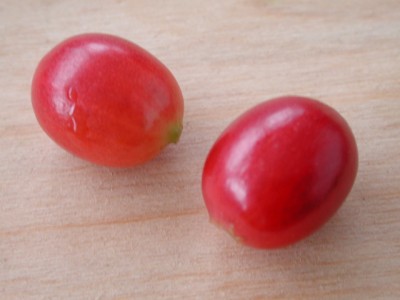Popular Science time | Botanical knowledge of Coffee

For professional baristas, please follow the coffee workshop (Wechat official account cafe_style)
Taste coffee with all kinds of flavor, think about the issue of universal values, but forget the original appearance that is given by God, precious and needs to be cherished. Coffee beans are not born this way, they are crystallized through a lot of hard work.
1. Scientific name: Coffee L.
2. Family name: Rubiaceae.
Generic name: coffee (coffee)
Origin: tropical and subtropical regions (Africa)
5. Morphological characteristics:
Characters: evergreen trees, up to 10 meters in height, conical in shape.
Leaves: leaves opposite, leaf surface dark green, leaf back light green, oval or ovate, petiole short, middle rib obvious, leaf margin with microwave wave.
Flowers: flower clusters in leaf axils, white, Corolla 5-lobed, revolute and fragrant. Flower buds are compound buds, with 6 flower buds in each leaf axil, which bloom many times because of different development. The florescence is concentrated in 2mi to March, but only about 3MMI for 5 days, and the appearance aroma is similar to that of jasmine.
Fruit: immature green, ripe red, mature period of about 6 Murray 7 months, the shape is similar to cherries, so also known as coffee cherry (coffee cherry). The fruit is composed as follows:
Exocarp (exocarp): bright red exocarp
Pulpy pulp (mesocarp): sweet, sticky yellow substance under the peel
Endocarp (parchment): protective hard milky bean-shaped shell with seeds and their silver skins, mainly to separate seeds and mucus.
Silver skin (silverskin): the septal tissue on the surface of a seed
Bean: coffee beans, usually with a pair of seeds in the fruit; occasional fruit with a single seed, called fruit beans, round beans (Pea berry), single beans.
6. Varieties: there are nearly 66 species of coffee, of which five kinds of coffee are used for drinking:
Arabica coffee (arabica coffee): accounts for about 75% of the global output, good quality, the largest producer is Brazil. This kind of coffee can be subdivided into 8 varieties, and the most common ones are Bourbon and Typica.
Robusta coffee (robusta coffee): accounts for about 25% of the global output, easy to cultivate, the largest producer is Indonesia. The species name of this coffee is coffee canephora pierre ex froehner.
Libyan Coffee (liberica coffee): also known as Liberian Coffee, Liberian Coffee, Scientific name coffee dewevrei de wild et durand var.excelsa chevalier, production and international trade volume is less.
Excelsa coffee: also known as high-variety coffee, Exelsa coffee, the scientific name is coffee dewevrei de wild et durand var.excelsa chevalier, the output and international trade volume is less.
Arabusta coffee (arabusta coffee): a hybrid coffee produced by the hybrid of Arabica coffee and Robusta coffee and Ake Assi, the scientific name is coffee arabica x coffee canephora capot et ake assi.
Important Notice :
前街咖啡 FrontStreet Coffee has moved to new addredd:
FrontStreet Coffee Address: 315,Donghua East Road,GuangZhou
Tel:020 38364473
- Prev

Can you smell all the common aromas of 36 kinds of coffee in SCAA textbooks?
Exchange of professional baristas Please follow the Coffee Workshop (Wechat official account cafe_style) the American boutique Coffee Association (SCAA) training cup tester's teaching materials, there is a variety of aroma in small bottles of liquid, which is a way to train olfactory memory, but also so that cup testers in the evaluation of coffee can have a common language and tools to describe the aroma of coffee. The following is the usual
- Next

Coffee grounds can deodorize and... huh? 10 unexpected practical tricks
Professional barista communication Please follow the coffee workshop (Wechat official account cafe_style) after drinking coffee, do not rush to pour out the coffee grounds, do you know it actually has a variety of uses? According to the Daily Mail, coffee grounds are actually good things to make good use of! 1. Remove stubborn dirt and mix coffee grounds with soapy water, which is a natural cleaner.
Related
- Beginners will see the "Coffee pull flower" guide!
- What is the difference between ice blog purified milk and ordinary milk coffee?
- Why is the Philippines the largest producer of crops in Liberia?
- For coffee extraction, should the fine powder be retained?
- How does extracted espresso fill pressed powder? How much strength does it take to press the powder?
- How to make jasmine cold extract coffee? Is the jasmine + latte good?
- Will this little toy really make the coffee taste better? How does Lily Drip affect coffee extraction?
- Will the action of slapping the filter cup also affect coffee extraction?
- What's the difference between powder-to-water ratio and powder-to-liquid ratio?
- What is the Ethiopian local species? What does it have to do with Heirloom native species?

